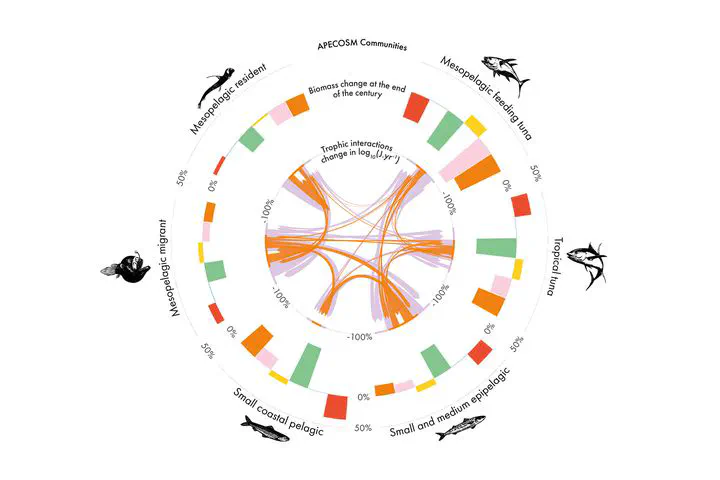Poster : Modeling the Future of Ocean Ecosystems in a Changing Climat
Jun 1, 2025· ,,,·
0 min read
,,,·
0 min read
Laureline Dalaut
Nicolas Barrier
Matthieu Lengaigne
Olivier Maury

Abstract
Pelagic ecosystems span the global ocean, supporting a wide range of species from iconic predators like sharks and rays to essential fishery resources, including offshore species such as tuna and swordfish, as well as smaller coastal fish like anchovies and sardines. Equally vital, though less visible, are mesopelagic organisms, which play a crucial role in carbon export and climate regulation. These ecosystems are marked by distinct vertical layers, horizontal variability, and temporal changes, presenting significant challenges for global-scale modeling. The scarcity of comprehensive, synoptic observations further complicates the calibration and validation of these models. As climate change rapidly alters ocean conditions, the ecological impacts on pelagic ecosystems are becoming more pronounced, highlighting an urgent need to deepen our understanding of how these ecosystems respond to climate variability and human pressures. While current ecosystem models can predict shifts in the spatial distribution of fish, many uncertainties remain, particularly around the mechanisms driving ecosystem dynamics and the complexity of trophic interactions. The mechanistic model APECOSM is utilized to explore the spatial dynamics of six generic pelagic communities, from the surface to 1,000 meters depth. This approach helps to uncover how these ecosystems adapt to climate change, identifying key processes such as primary production and temperature fluctuations that influence ecosystem responses. The findings provide valuable insights into the evolution of three-dimensional spatial structuring in pelagic ecosystems, offering a clearer picture of their functioning and resilience in a changing climate.
Type
Publication
In One Ocean Science Congress Conference